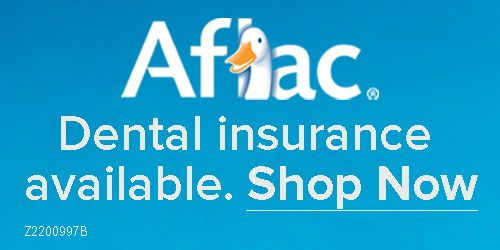
Q. Is it better for me to pay out of pocket for dental care and not worry about dental insurance?
A. For those who purchase their own insurance, the decision to purchase dental coverage is not always as clear-cut as the decision to purchase health insurance.
While an uninsured patient can incur hundreds of thousands of dollars in medical costs relatively quickly, being without dental insurance will not directly result in that sort of financial ruin. But untreated oral infections can lead to other systemic health problems that can be life-threatening, and access to affordable dental care is much more than just a cosmetic issue.
Financial burdens
Compared with other medical care, Americans are far more likely to skip necessary dental care because they can’t afford it. And although the Affordable Care Act greatly improved coverage of dental care for children, it did not change the rules regarding dental care for adults. (Some adults have gained dental coverage as a result of the ACA's expansion of Medicaid, but this varies from one state to another.) See dental coverage options in your state.
While private dental plans generally present a better value than self-insuring if a patient does end up needing dental care, they can leave patients with significant out-of-pocket costs if extensive dental work is needed.
Running the numbers
But how would the costs of your dental care with dental insurance compare to your expenses without?
A recent insurance industry study of hypothetical dental scenarios compared the cost of self-insuring (paying the full dental bill yourself, without buying insurance) versus a variety of dental insurance plans and dental discount plans. The three scenarios involved minor, moderate, and extensive dental work, and associated costs. In every case, the most expensive option was to self-insure.
Their model scenarios included x-rays, exams, and biannual cleanings, which some people forego. And of course, their model scenarios also included obtaining the necessary dental care, whereas in reality, a not-insignificant number of people simply don’t go to the dentist at all.
According to the American Dental Association, 100 million Americans — almost a third of the population — don't visit the dentist in a given year. Obviously, for people who don't seek care, dental costs are zero. But as Christopher Smith's story illustrates, unaddressed dental problems can lead to much more significant health problems.
Clearly, going entirely without dental care isn’t a viable long-term solution. Given that virtually everyone needs at least basic preventive dental care – and even with preventive care, most people end up needing additional dental care as well – it stands to reason that some sort of dental coverage will be beneficial to most people who have it.
And for some people, the monthly premiums actually serve as an incentive to encourage them to seek out preventive dental care and treatment for minor dental ailments before they become major issues.
But most people who have dental coverage receive it as an employee benefit, with the employer paying a chunk of the premiums. When you have to pay your own premiums for an individual market plan, the numbers might not work out in your favor: Not only will you pay the full cost yourself, but the full cost will tend to be more expensive, as individual dental coverage is more likely to be purchased by people who plan to use it, versus employer-sponsored dental coverage that employees might select as part of their benefits package even if they have no plans to obtain dental care in the near future.
Benefit caps and dental insurance waiting periods
Dental plans – including plans obtained via employers or purchased in the individual market – tend to have benefit caps in the range of $1,000 to $2,000 per year, which can easily be used up if you need extensive dental work.
And there are also often waiting periods for major procedures, which means you'd need to pay the premium for a year before you could start receiving those benefits. (These can be waived on some plans if you already had dental coverage in effect before starting the new plan.).
You'll generally receive comprehensive coverage for routine preventive care and non-major dental treatments, but you may find that the premiums essentially amount to a prepayment plan. But again, if having the coverage is the factor that motivates you to seek routine preventive dental care and obtain treatment before dental issues become serious, the plan may well be worth what it costs in premiums.
(Employer-sponsored HMO dental plans sometimes have no benefit cap. But this type of coverage is generally not available to individuals who are purchasing their own coverage, and can only be obtained through an employer that offers it. You may also find individual dental plans available without benefit caps, but with no coverage for very high-cost dental services such as dentures, implants, crowns, and root canals.)
How can adults obtain dental insurance?
If you have access to a dental plan from your employer or your spouse's employer, that will probably be the most economical option.
But you can also purchase a stand-alone dental plan, with premiums that will generally be in the range of $15 to $50 per month (costs are higher for family coverage). If you're enrolling in health coverage through the Marketplace/exchange in your state, you may find that you can also purchase a separate adult dental plan (in most states, you can't purchase a stand-alone dental plan from the marketplace if you're not also enrolling in a health insurance plan through the marketplace).
There are also stand-alone dental plans available for purchase directly from dental insurance companies. These can be obtained online, without needing to purchase any other coverage.
Louise Norris is an individual health insurance broker who has been writing about health insurance and health reform since 2006. She has written dozens of opinions and educational pieces about the Affordable Care Act for healthinsurance.org.

